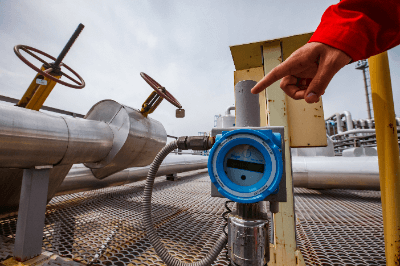What Is a Hydrogen Sulfide Meter?

A hydrogen sulfide meter is a device that measures the concentration of hydrogen sulfide in air or water.
Hydrogen sulfide is a toxic gas and is sometimes monitored as an important parameter in various industrial fields and environmental studies. In particular, high concentrations of hydrogen sulfide have a high potential for health hazards.
Even low concentrations of hydrogen sulfide can cause eye and respiratory irritation and other symptoms. By using a hydrogen sulfide meter, the concentration of hydrogen sulfide in the work environment can be monitored to ensure the health and safety of workers.
It can also be released into the air or water, which can have a negative impact on the surrounding environment. It can be a causative agent of acid rain or have harmful effects on organisms in the water. A hydrogen sulfide meter can detect abnormal values at an early stage and prevent environmental pollution.
Uses of Hydrogen Sulfide Meters
Hydrogen sulfide meters are used in a variety of industrial fields and for environmental studies. The most common applications are for process control or working environment measurements.
1. Oil and Gas Industry
In the oil and gas industry, hydrogen sulfide meters are widely used for working environment measurements. Hydrogen sulfide is likely to be generated at work sites such as oil drilling and natural gas production plants. They are used to ensure the safety of the working environment and to monitor worker health risks.
2. Wastewater Treatment Plants and Sewage Facilities
Wastewater treatment plants and sewage facilities can produce hydrogen sulfide. Hydrogen sulfide meters are often used to monitor the concentration of hydrogen sulfide in wastewater and to provide indicators for proper treatment.
3. Public Places
Hydrogen sulfide meters may also be used to study hydrogen sulfide concentrations in public places and natural environments. Samples of lakes, air, etc. can be obtained to measure levels of hydrogen sulfide, which is useful for monitoring environmental pollution and for environmental protection activities.
Principle of Hydrogen Sulfide Meters
Hydrogen sulfide is detected using specific detection methods. Detection methods vary from chemical reactions to products that use physical changes.
It is possible to cover a defined hydrogen sulfide concentration range. Typical ranges are from a few ppb to several ppm, but may vary depending on the specific application.
Two measurement methods are common: continuous monitoring or intermittent sampling. In continuous monitoring, the instrument constantly measures hydrogen sulfide concentrations in air or water and provides real-time data. In intermittent sampling, samples are taken at specific time intervals and later analyzed.
Measurements are often displayed digitally or on an analog pointer. They may also have the ability to issue warnings or alarms when certain concentration levels are exceeded.
Types of Hydrogen Sulfide Meters
Several types of hydrogen sulfide meters exist. The following are examples of hydrogen sulfide meter types:
1. Portable Hydrogen Sulfide Meter
Portable hydrogen sulfide meters are available. Most are small and can be operated by batteries. They are suitable for on-site safety management and inspections because they allow workers to monitor concentrations while on the move.
Battery-powered products can often be recharged for use. Many products have real-time display of concentration and alarm functions.
2. Fixed Hydrogen Sulfide Meter
Fixed hydrogen sulfide meters are installed in a fixed location and continuously monitor hydrogen sulfide concentrations. They are typically used at a specific location, such as a factory, plant facility or pipeline. They are often used for safety management and process control.
The sensor and the main unit are connected by a cable, and the data is transmitted to a monitoring room or control system. Many products are capable of high-precision measurement and multifunctional monitoring, and are capable of issuing an alarm when outside the set value range.
3. Throw-in Hydrogen Sulfide Meter
This hydrogen sulfide meter is used by throwing in the sensor. They are used by holding a special handle or cable and throwing in the sensor or reagent. They are characterized by the fact that they can be used without coming close to a hydrogen sulfide atmosphere.
Other Information on Hydrogen Sulfide Meters
Health Hazards of Hydrogen Sulfide
10ppm is the limit concentration under irritation of the mucous membrane of the eye. 50ppm to 100ppm causes airway irritation and conjunctivitis. 100ppm to 200ppm causes olfactory paralysis, 300ppm causes subacute poisoning symptoms in one hour, 600ppm causes fatal poisoning in one hour, and 1,000ppm At 1,000 ppm, the concentration is said to be fatal immediately.
For this reason, most small portable hydrogen sulfide meters are limited to 50ppm.